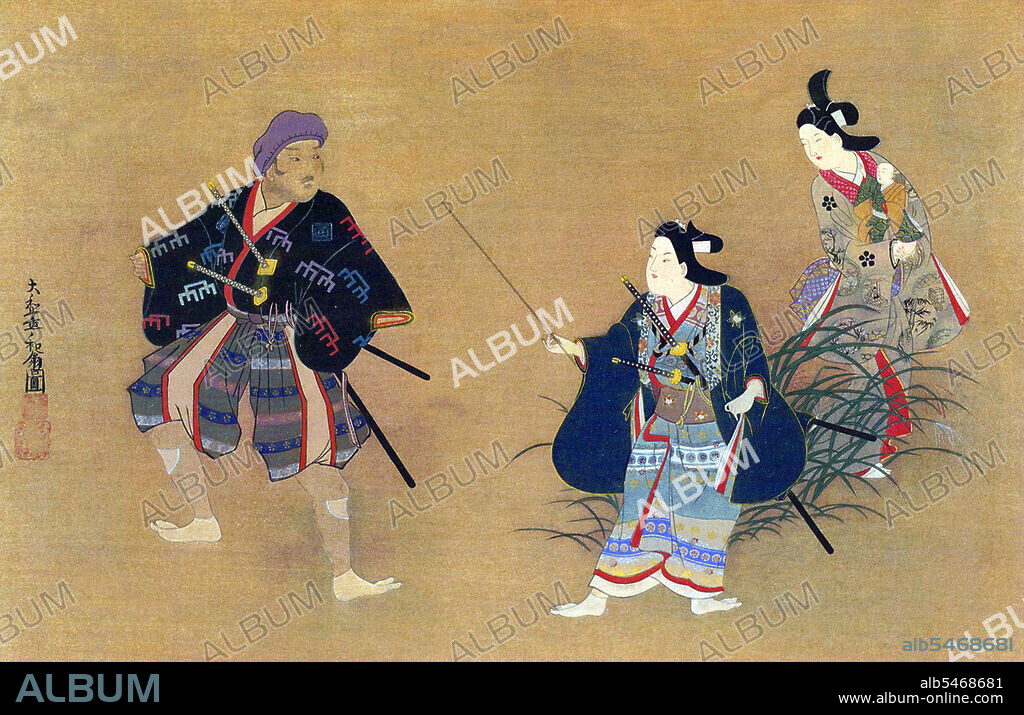alb5468681
Japan: Theatrical scene, Hishikawa School,17th century.

|
Add to another lightbox |
|
Add to another lightbox |



Title:
Japan: Theatrical scene, Hishikawa School,17th century.
Caption:
Yamato-e is a style of Japanese painting inspired by Tang Dynasty paintings and developed in the late Heian period. It is considered the classical Japanese style. From the Muromachi period (15th century), the term Yamato-e has been used to distinguish work from contemporary Chinese style paintings (kara-e), which were inspired by Song and Yuan Dynasty Zen Buddhism paintings. The Yamato-e often tell narrative themes with text along with them, show the beauty of nature, e.g. famous places (meisho-e), and the four seasons (shiki-e). The pictures are non-symbolic and have the objective of depicting the beauty in nature. The pictures are often on scrolls that can be hung on a wall (kakemono) or handscrolls (emakimono) that could be read from right to left with the accompanying story or on a folding screen (byoubu) or panel (shouji). Although they received their name from the Yamato period (250-710 CE), Yamato-e pictures rather stand for a style and are not restricted to a particular period. Although the most famous artists painted in sumi-e style in the Muromachi period, this was not characteristic of early pictures.
Credit:
Album / Pictures From History/Universal Images Group
Releases:
Model: No - Property: No
Rights questions?
Rights questions?
Image size:
5127 x 3315 px | 48.6 MB
Print size:
43.4 x 28.1 cm | 17.1 x 11.1 in (300 dpi)
Keywords:
ART • ARTS • ASIA PICTURES • ASIA • ASIAN IMAGE • ASIAN IMAGES • ASIAN PICTURES • ASIAN • FASHION • HISTORIA UNIVERSAL • HISTORICAL IMAGES • HISTORICAL PICTURES • HISTORICAL • HISTORY IMAGES • HISTORY PICTURES • HISTORY • JAPAN • JAPANESE • LEGEND • MODA • PAINT • PAINTING • STYLE • THEATRE • YAMATO-E
 Pinterest
Pinterest Twitter
Twitter Facebook
Facebook Copy link
Copy link Email
Email

